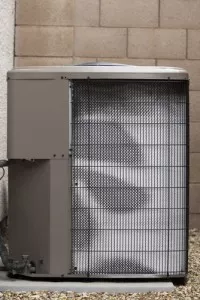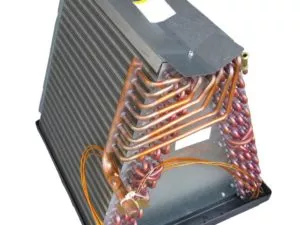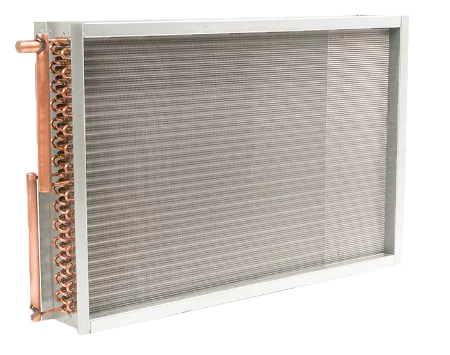What Are Evaporator & Condenser Coils & How Do They Help Cool Your Home?
Given the Raleigh area’s hot summers, you probably know some basic facts about your air conditioner, but do you know how the evaporator and condenser coils operate?
If the inner workings of your AC are a mystery to you, you’ll benefit from learning a few technical details about how your cooling system does its job.

No matter how much your air conditioner operates, it’s important to perform routine AC maintenance that keeps your evaporator and condenser coils and the rest of your system running efficiently.
If something goes wrong, you’ll be better able to troubleshoot the problem. Your knowledge will also help you make smart choices when you’re ready to buy replacement components or upgrade your air conditioner.
Need repair or replacement for your evaporator or condenser coils in the Raleigh-Durham area? Our team at Air Experts can get the job done.
Call or contact us online to schedule your appointment today.
Get To Know the Evaporator Coil

Air conditioners don’t actually “produce” cold air like a furnace produces heat. Instead, they use refrigerant, or coolant, to absorb heat from the air, carry that heat outdoors, and release it into the air outdoors.
The refrigerant circulates continuously to remove more and more heat from your home until your indoor air temperature reaches the setting on the thermostat.
Evaporator and condenser coils handle different sides of the cooling cycle. Let’s walk through the evaporator coil first.
What Is an Evaporator Coil?
An air conditioner’s evaporator coil, also called the evaporator core, is the part of the system where the refrigerant absorbs heat. It’s where the cold air comes from.
The evaporator coil is inside or near the air handler where the blower fan is. Evaporator coils are made from copper, steel, or aluminum because these metals conduct heat easily. Most residential AC evaporators consist of tubes bent into U-shapes and set into panels.
The panels are typically positioned in the form of an “A.” These panels are lined with thin pieces of metal known as fins, which bring the passing air to be cooled closer to the coils to maximize the refrigerant’s effect.
As the AC runs, the compressor pulls cold, low-pressure liquid refrigerant through the tubing in the evaporator coil. Before entering the evaporator coil, the refrigerant passes through the expansion valve. This valve relieves pressure from the liquid refrigerant, which rapidly cools it.
The liquid refrigerant leaving the expansion valve is quite cold, which allows it to absorb heat from the air. The expansion valve also controls how much refrigerant flows to the evaporator. More advanced expansion valves, such as thermostatic expansion valves (TXVs), can precisely control the flow to improve the system’s overall energy efficiency.
As the refrigerant flows, the blower fan draws hot room air over the evaporator coil. The refrigerant absorbs heat from the passing air, and as it does so, it warms up and evaporates.
When the water vapor in your warm household air hits the cold evaporator coils, the water vapor condenses into liquid and drips down into the condensate pan, which drains the water away outdoors. This is how your evaporator coil reduces your home’s humidity.
4 Reasons You Need To Care for Your Evaporator Coil
Because of how they operate, evaporator and condenser coils need to be kept clean to perform as intended and reach optimal energy efficiency. A dirty evaporator coil can experience several problems, including:
- Impaired heat absorption and cooling capacity
- Higher energy use
- Higher pressures and temperatures
- Frost and ice buildup
Even a fine layer of dust on the evaporator coil reduces its efficiency. The dust acts as an insulator, keeping the heat in and the air away from the cold coils. That means the coil can’t absorb as much heat as it can when clean. Your system will then have to run longer to provide the indoor temperature you want, meaning it will use more energy.
Because it isn’t absorbing enough heat, the refrigerant running through a dirty evaporator coil doesn’t warm up as much as it should. This cold refrigerant causes water vapor in your air to freeze rather than condense into a liquid. Eventually, the whole evaporator coil can frost over.
A layer of frost on your evaporator is never normal. Letting your system run with a frozen evaporator raises the temperature in the compressor and can eventually cause this component to fail.
Dust on the evaporator coil, debris on the outdoor condenser unit, a dirty air filter, and a refrigerant leak can all cause the evaporator to freeze. Contact a heating and cooling technician if you can’t identify the problem.
Evaporator coils can also develop tiny pinhole leaks due to corrosion from the mixing of moisture from condensation with chemicals commonly found in household air. Oily residue around the evaporator or in the drain pan is a sign your coil is leaky and needs replacement.
The airborne chemicals that encourage these leaks are known as volatile organic compounds (VOCs) and come from new carpeting, upholstery, pressed wood furniture, air fresheners, cleaning chemicals, and many other sources. Ensuring good home ventilation reduces the VOCs in your indoor air, protecting the evaporator coil and your health.
Need a repair for an evaporator coil in Raleigh? Contact us today.
How Does the Condenser Coil Do Its Job?
Evaporator and condenser coils work together to cool your home, so the evaporator coil wouldn’t be much good without a condenser coil to complete the second half of the cooling cycle.
What Is an Air Conditioner Condenser?

Your air conditioner’s condenser is contained in the large, square unit outside your house. Although the whole unit is called the “condenser unit,” it contains multiple components, including the condenser tubes and fins, the compressor, a fan, copper tubing, and valves and switches.
After the refrigerant absorbs heat from your home’s air, it travels outside via a copper tube to the condenser unit. Here, the low-pressure, warm refrigerant gas enters the compressor. The compressor pressurizes the refrigerant, turning it into a hot, high-pressure gas.
This gas leaves the compressor and flows into the condenser coils, which is where the refrigerant releases much of the heat that was absorbed from your home. The fan on top of the outdoor unit blows air over the condenser coils, so the refrigerant inside loses heat. The condenser’s many coils increase the amount of time the refrigerant is in the path of blowing air, giving it plenty of time to release the heat that was carried out of your home.
As it cools, the refrigerant changes from a hot gas to a hot liquid. From there, it flows back through a copper tube into your home and into the expansion valve in the indoor unit near the evaporator coil.
Keeping the Condenser in Shape
Good airflow is critical for evaporator and condenser coils. Both these components transfer heat, and dust or debris interferes with their ability to do this.
For condenser units, the most common threat is a buildup of yard debris on the fins. This usually takes the form of grass clippings, fallen leaves, twigs, and pet hair that make it harder for the condenser to release heat. This reduces your AC’s energy efficiency and strains the condenser and other components.
Check the condenser periodically, and if you notice debris buildup, shut off power to your whole system and use a stiff brush to gently clean the fins.
On occasion, an AC condenser can develop frost or a complete casing of ice. Assuming the condenser unit is clean, ice-ups like this usually mean there’s an airflow problem elsewhere in your system. It could be a dirty air filter, dirty air registers and vents, a duct blockage, or a dirty evaporator coil. Ice on the condenser can also be caused by low refrigerant, which requires a call to a technician.
When summer ends, protect the outdoor condenser from the elements by covering the top with a piece of wood held down at all four corners by bricks. This keeps snow from piling up inside.
You may have seen your neighbors’ condensers wrapped in plastic for the winter, but this approach can do more harm than good. Covering the whole unit traps moisture inside, encouraging rust. It also makes the unit more tempting for animals seeking shelter.
Learn more about evaporator and condenser coils and our air conditioning solutions, or call to schedule an appointment.
Raleigh-Area Air Conditioning Repairs for Evaporator Coils & Condenser Coils
Our team at Air Experts can repair or replace your AC’s evaporator coil or condenser coil in the Raleigh-Durham area.
Call or contact us online to schedule your appointment today.
We provide service in:
Apex, Carrboro, Cary, Chapel Hill, Clayton, Durham, Garner, Hillsborough, Holly Springs, Knightdale, Morrisville, Pittsboro, Raleigh, Rolesville, Wake Forest, Wendell, Willow Springs, Youngsville, Zebulon, and surrounding areas.







